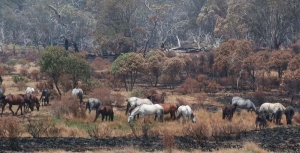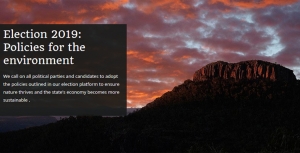Displaying items by tag: Koscuiszko National Park
Good news on effective control of feral horse numbers
In the previous edition of STEP Matters there was an article about the NSW government’s proposal and consultation on reinstating aerial culling of feral horses in Kosciuszko National Park. In October there was the pleasing announcement that the ridiculous decades-old ban on aerial shooting of feral horses is to be repealed. The latest government survey of horse numbers has actually shown a small decrease of about 7%. There is a long way to go to get down to the target of about 3,000 from the current estimate of about 17,000 horses.
This decision throws a lifeline to more than 30 endangered species that call the Australian Alps home, including the southern corroboree frog and mountain pygmy possum. Our park rangers can now finally get on with the task of removing thousands of feral horses from our fragile alpine environments – before the mountains and rivers are trampled beyond repair.
More Bad Decisions by the NSW Government
In recent months there have been several more bad policy decisions by the NSW government that go against scientific common sense. Under this government many environmental protections have been reversed. The election in March 2019 will be critical in turning around this adverse situation. Here is a brief summary of the major recent decisions.
1. Backflip on the Sydney Marine Park Sanctuary Zones Proposal
The only NSW coastal region that currently does not have a marine park is the Hawkesbury Shelf marine bioregion that stretches from Newcastle to the Wollongong coastal waters. A long process of campaigning and consultation has been undertaken on the creation of a park. Finally an announcement was made on consultation on a draft marine park plan. The proposal included fully protected sanctuary (no fishing) zones that covered only 2.4% of the marine area including estuaries and other protected zones that restrict line and spear fishing.
A group of recreational fishers protested vocally blowing the restrictions all out of proportion. The Minister for Primary Industries promptly decided to withdraw the sanctuary zones from the plan. A knee jerk reaction that threw out the window all that scientific consultation and discussion. Evidence shows that sanctuary zones are essential for preserving and restoring the marine estate for future generations.
The draft plan provided limited protections even before the backflip. In addition to the conservation areas covering only limited areas, these zones would allow taking of lobster and abalone. Lobsters are important for controlling the numbers of sea urchins that devour kelp that are a vital source of food for many species. The increase in sea temperatures from climate change is already causing a boom in sea urchin populations.
Consultation on the draft marine park plan closed at the end of September.
2. Raising Warragamba Dam Wall
In the Issue 192 of STEP Matters we described the pointlessness of the claim that raising the Warragamba Dam wall will provide flood protection for the Hawkesbury Nepean Valley. There are five other rivers below Warragamba Dam that flow into the valley. The wall-raising proposal will cause huge damage to the pristine wilderness and wild rivers of the World Heritage Blue Mountains National Park, drown several Aboriginal cultural sites and destroy threatened plants such as a significant proportion of what remains of the critically endangered Camden White Gum Forest and the habitat of the Regent Honeyeater.
An environmental impact and economic assessment has not been done but last month the government passed legislation to change the National Parks Act to allow inundation of the park, a first step to facilitate the proposal. Everybody is saying that the real reason for the plan is to reduce the risk of flooding of all the new homes that the government wants to build in the North West Growth Centre. But that cannot be 100% assured by raising the dam wall. Flood data experts argue that management of the water level in the dam and even using the idle desalination plant would be more effective and less costly.
3. Protection for Feral Horses in Koscuiszko National Park
This issue was covered in STEP Matters, Issue 196. The government is ignoring protests from people concerned about the welfare of the horses as well as the damage they are doing to the sensitive alpine vegetation. The opposition parties have vowed to repeal the legislation if elected. A walk is currently being held from Sydney to Mt Kosciuszko to raise awareness of the issue.
4. Proposal to Revoke the Murray Valley National Park Status
A National MP has presented a private member’s bill in parliament that would delist the Murray Valley National Park. This would open up the area for logging of the river red gums. Only 5.5% of Riverina bioregion is protected compared to the international target of 17% for each region. The bill is unlikely to be debated before the state election but it sets a terrible precedent.
These recent developments are on top of previous bad decisions such as removal of land clearing controls or their replacement with weak offset provisions. 99% of identified koala habitat on private land can now be cleared without restriction. There is already evidence of the predicted increase in land clearing even though the act only came into operation in August 2017. A study commissioned by the NCC and WWF of satellite images of north-western NSW covering the Moree and Collarenebri areas showed that the area cleared in 2017–18 was triple the area in 2016–17.
The NSW government has announced funding for purchasing koala habitat from private landowners and conversion of unproductive state forests to conservation but this is not considered enough to make any difference to the need for secure habitat. A Koala national park is a must.


